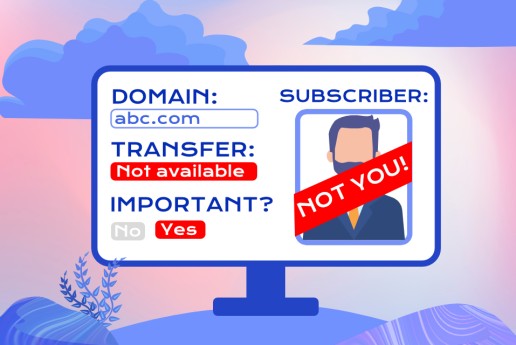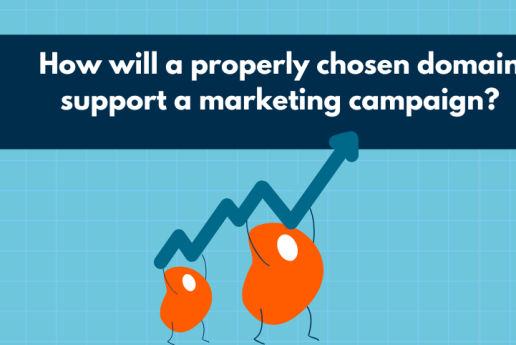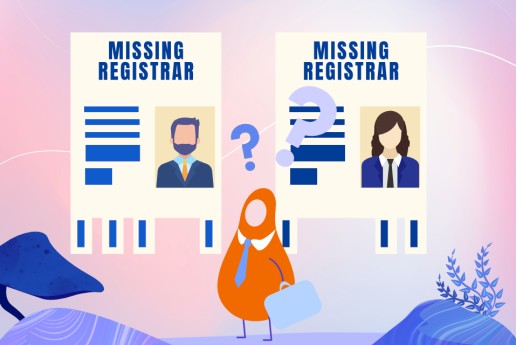How is it done? The life cycle of domain names

Everything has its beginning and end including the domain name. Depending on the suffix, domain names differ in their life cycle, i.e. from the time of registration to the time they are released. Some domain names last longer and the rules for their renewal are friendlier for those slightly absent-minded. In other cases, any late payments can lead to negative financial consequences and even to immediate removal of the domain.
Have you ever wondered what happens to a domain name from the moment it is registered? How much can it cost you to miss the renewal date? How much is the life cycle of each domain different? In this article we are going to explain all those ambiguities.
Expired domain vs quarantine
To understand the domain name lifecycle in detail, let’s start by explaining some key concepts:
- An expired domain name is the term for a domain that has not been renewed on time. For example, if a domain name was registered for one year and was not extended during that time, its status changes to “expired”. This domain name is inactive, i.e. the services related to it (DNS entries) do not work. In the case of global, new and some national domains, two additional phases of expiry can be distinguished:
- Grace period (GP) is a period that allows you to extend a domain name after its expiry date. On our website, domain renewal is usually free of charge within 14 days after its expiry date. After this time, up to the 28th day, renewal is possible for an additional fee, according to the price list.
- Redemption grace period (RGP) is a period during which the subscriber can still pay a one-time fee for domain reactivation, but much higher. If no such payment is made, after the expiry date, the domain name is removed from the registry, taken over by the registry or transferred to an auction and sold to a third party. If it is removed, it takes up to 5 days. Finally, the domain name might be traded and becomes available for registration again
- Quarantine is the term for an expired domain. It is used for .eu domain names. Renewal is possible for the entire duration of the quarantine.
Life cycle of .pl domain names
A domain name with .pl suffix is the most frequently registered domain in Poland and is best recognized by Internet users. Its life cycle can be divided into 4 stages:
- available for registration,
- registered,
- expired,
- released for re-registration.
A .pl domain name can be registered for a period of 1 to 10 years, after which, if the domain name is not renewed, the domain name expires and enters a 30-day expiration period. On our website, throughout this period, its renewal is free of charge.
If the subscriber does not renew the domain name during its expiry period, it is released and enters the pool of available domain names. It may happen that NASK registry will delete a domain name during the registration or expiry period, e.g. due to the contract termination, as a result of a dispute over a domain name. Removal in this case takes exactly 5 days.
When a domain name is deleted, it is often intercepted by automated scripts – it refers especially to domain names that are considered valuable due to the keywords they contain or their history. Therefore, we strongly advise you not to wait and delay the renewal of the domain name. Do not count on the fact that the domain name will be released, and you will easily register it again. It is possible that someone else will do it faster and you may have to buy the domain name at a high price.
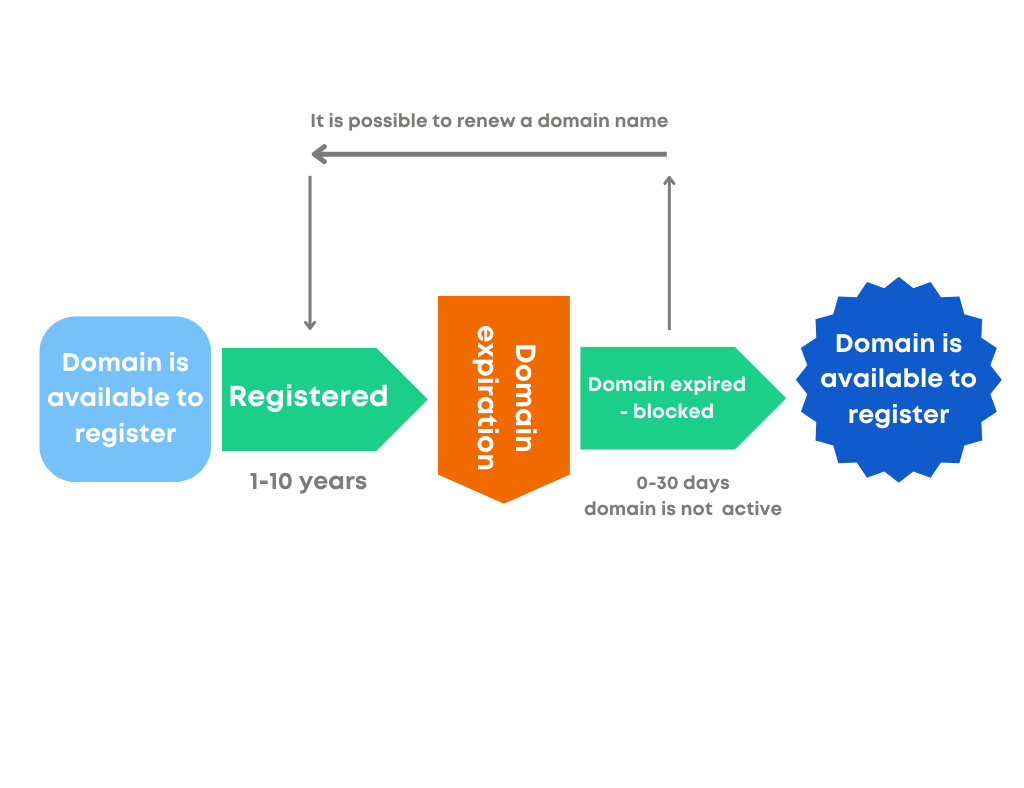
Until January 8, 2020, it was possible to reserve a domain name for the first 14 days before registration. In addition, once the reservation period expired, there was a 90-day domain suspension period, during which the registration could be completed.
The reservation concerned only .pl suffixes. and currently it does not apply to other domain names (with very few exceptions for other countries, but it is not created automatically).
Life cycle of .eu domain names
The .eu domain name is a domain that is intended for all natural persons, companies and organizations with their residence address or registered office in the territory of any country belonging to the European Union. Its life cycle can be divided into 4 stages:
- available for registration,
- registered,
- in quarantine,
- released for re-registration.
The .eu domain name can be registered for a period from 1 to 10 years, after which, if the domain name is not renewed, the domain name expires and enters a 40-day-quarantine. On our website, throughout this period, its renewal is free of charge. If the subscriber does not renew the domain name during quarantine, it immediately enters the pool of available domain names and can be registered by any person.
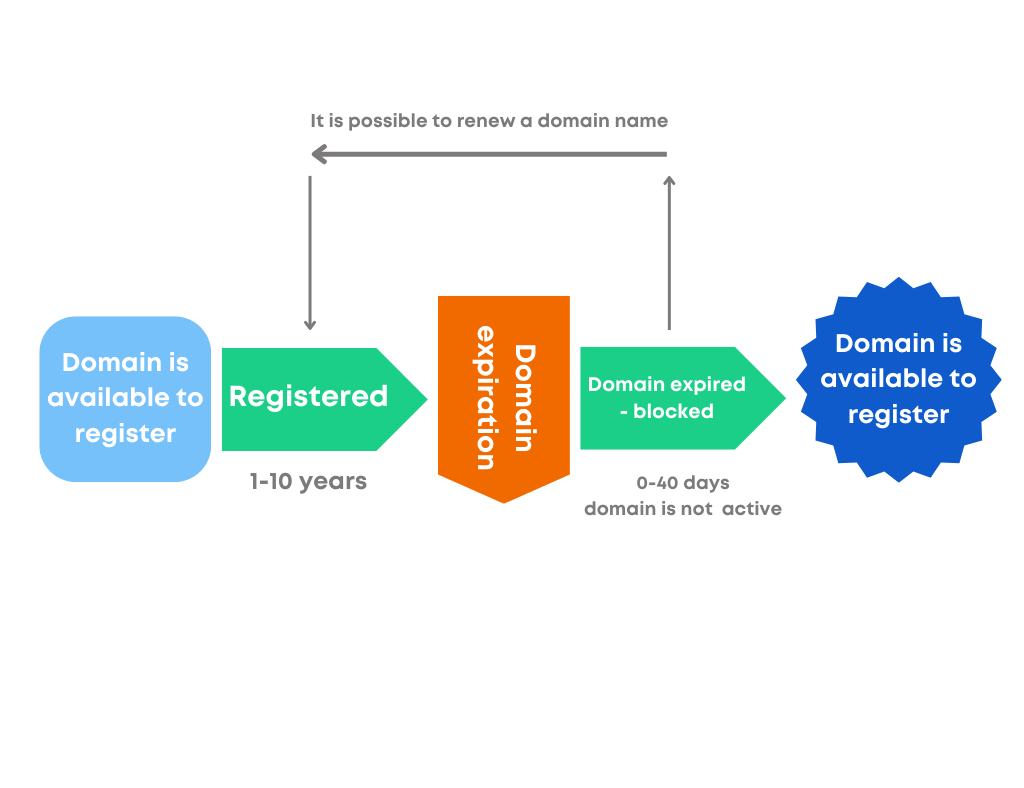
An exception includes domains registered before 15.09.2014, which were registered for several years. Such domain names will expire on the last day of the next month, e.g. a domain registered for 10 years on 5.05.2014 will expire on 21.05.2024. This means that it will be active for an additional period of 26 days.
Life cycle of global domains
Global domains are not associated with any country or geographic area. The popular global domains include, i.a.: .com, .biz, .net, .org, .info, but also a popular domain suffix: .tv, which in fact is the suffix of the Tuvalu state.
The life cycle of such a domain can be divided into 6 stages:
- available for registration,
- registered,
- expired (grace period),
- expired (redemption grace period),
- queued for removal,
- released for re-registration.
A global domain can be registered for a period from 1 to 10 years, after which, if the domain name is not renewed, the domain name expires and is inactive for another 45 days. On our website, for the first 14 days, its renewal is possible at a standard price. Extension by another 15-28 days is tantamount to an additional reactivation fee in accordance with the price list. If the domain is not renewed on time, it enters the second stage: quarantine (redemption grace period) and will wait there for another 30 days. At this point, the domain recovery process is more complicated and costly. After the end of the RGP period, the domain is deleted and released for the next period of 5 days.
However, it is not certain that each global domain name will go through its full life cycle. The registry is entitled to take over the domain name, sell or auction it. If nothing like that happens, finally it is possible to register it once again.
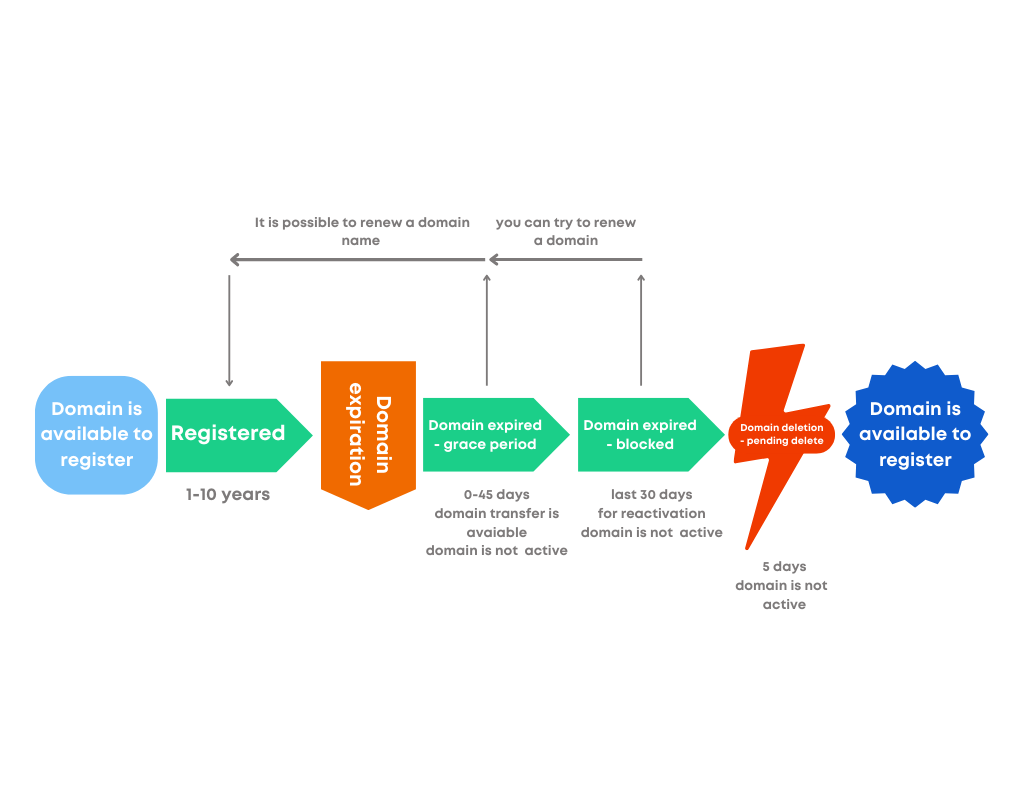
Life cycle of new domain names
New domain names appeared in response to the growing demand for www. addresses. They often identify the area in which the activity is conducted and also make it possible to shorten the existing names. Examples of new suffixes include .blog, .cooking, and .dev.
The life cycle of new domain names is the same as that of global domains and is divided into 6 stages. Depending on the domain registry, they may differ in the reactivation price, which can oscillate around several hundred dollars.
There are a few domain names that are registered in the serverHold or clientHold suspension state, which means that the domain will be registered but will not be active in DNS. In order to unlock it, an additional verification must be passed.
An example of such a suffix is .eco. The registrant must create a profile on profiles.eco and then answer the audit questions.
Life cycle of national domain names
National domain names, also known as domestic domain names, are two-letter top-level domain names, ccTLD for short (country code top-level domain). The life cycle of such domain names can be generalized to 4 stages.
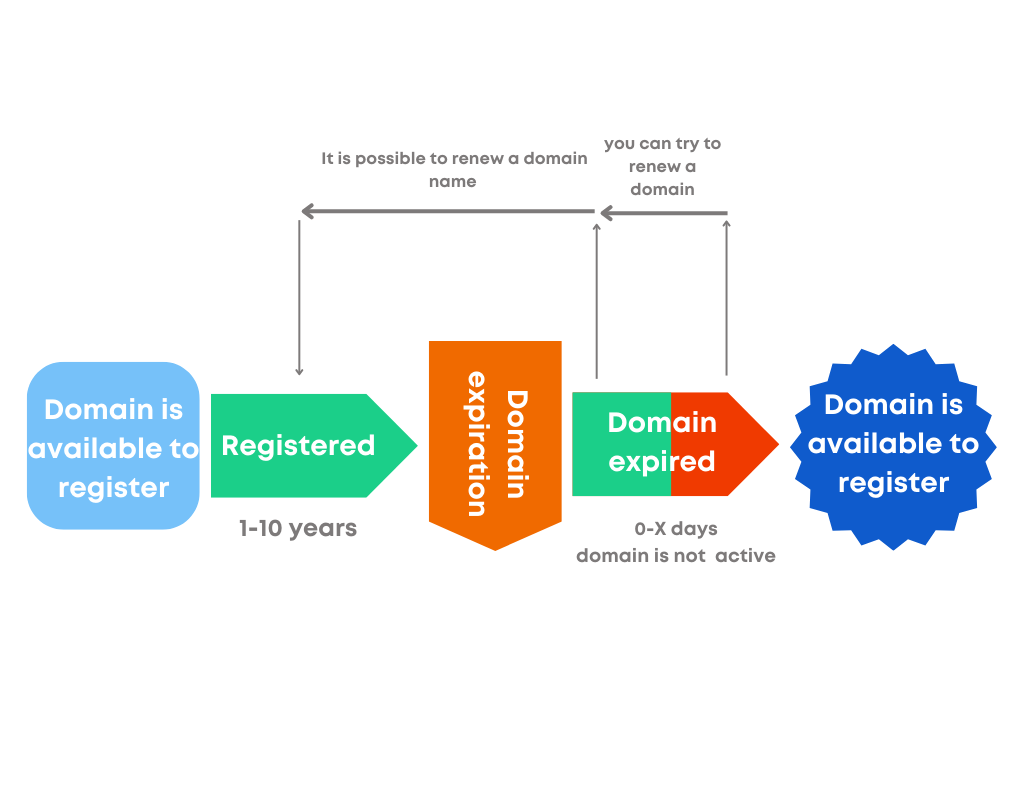
Due to a very large number of national suffixes, it is impossible to clearly define the period of domain name expiry. Each registry has its own rules, and the registration procedures are not standardized as in the case of new and global domain names.
Not every registry also publishes its policy. In the case of Polish domain names, it is defined very precisely, as we said before. Domain registries of countries with a lower level of Internet development may not even have an automated domain expiration process, and names are turned off manually every now and then. In such cases, it is even impossible to predict when the expired name will be released for re-registration.
Each registry has its own policy. The same applies as well to any possible reactivation fees. Often, domain name renewal is required in advance due to manual procedures related to the transfer of the customer's decision by the registrar to the registry, payment of appropriate fees, and completing of possible formalities.
There are many national domain names, where the fee for reactivation, added to the fee for domain name renewal, is high. Therefore, the cost of maintaining the domain can significantly increase if we decide to renew it once the deadline has passed.
For each country domain, the time limit for which we guarantee domain renewal at the nominal rate is clearly defined and visible in the administration panel.
Examples of domains with different expiration times include:
The .by domain has a specific policy – as it is deleted immediately without an expiry period. Here, the risk of losing the domain name is very high if you delay renewing the address with this suffix or if the renewal fee is credited with a delay at the registrar.
In addition, there are suffixes that differ in the minimum registration period:
Such domains will not expire after the first year, as they must be prepaid for a sufficiently longer period.
Summary
The life cycle of domain names can be divided into 4 or 6 stages depending on their suffix.
The most transparent expiry process refers to global domains, including new domain suffixes. It is possible to renew them in the event of a short delay at no extra charge. The subsequent phases of the domain name expiry process also allow for their recovery, although it is associated with a higher cost.
On the other hand, national domain names are very different from each other in terms of their expiry manner. They often require an advance decision and renewal fee, even if there is still some time left before your domain expires. The key thing here is to choose a good and experienced registrar who will efficiently and safely guide the client through all the procedures appropriate for a given country of domain registration.
Noteworthy is the fact that it is a good practice to renew domain names several weeks in advance of their expiry or renewal (if different from their expiry date). The renewal period does not count from the moment of payment but from the date of validity of the domain. Therefore, the period remaining from the moment of payment to the validity of the domain name is not lost, and we gain peace of mind and confidence that all services related to our domain will be conducted in an uninterrupted manner.
To sum up - if you want to be sure that you will not lose your rights to the domain name, do not wait until the last minute.
FAQ – Domain Lifecycle and Renewal
1.What is the domain lifecycle?
The domain lifecycle describes the stages a domain goes through – from registration, through active use, expiration, possible grace or redemption periods, to release for re-registration.
2.What happens if my domain expires?
Services linked to the domain (like email or website) stop working. Depending on the extension, you may still renew it during the grace period or redemption phase.
3.What is the grace period?
It’s a short extension after expiration (usually up to 30–45 days) when you can renew your domain at the standard or slightly higher price.
4.What is the redemption grace period (RGP)?
A costly recovery stage (typically 30 days) when a lapsed domain can still be reactivated before permanent deletion.
5.Do all domains have the same lifecycle?
No. Global domains like .com have standardized rules, but national domains (ccTLDs) often differ greatly in expiry policies, fees, and renewal periods.
6.How can I avoid losing my domain?
Renew early – ideally a few weeks before expiry. Use registrar reminders and enable auto-renewal if available.
I am promoting our services, products, and software. I work closely with the development and support teams, create campaigns and content, manage social media, and translate complex technical concepts into clear communication for our customers.





